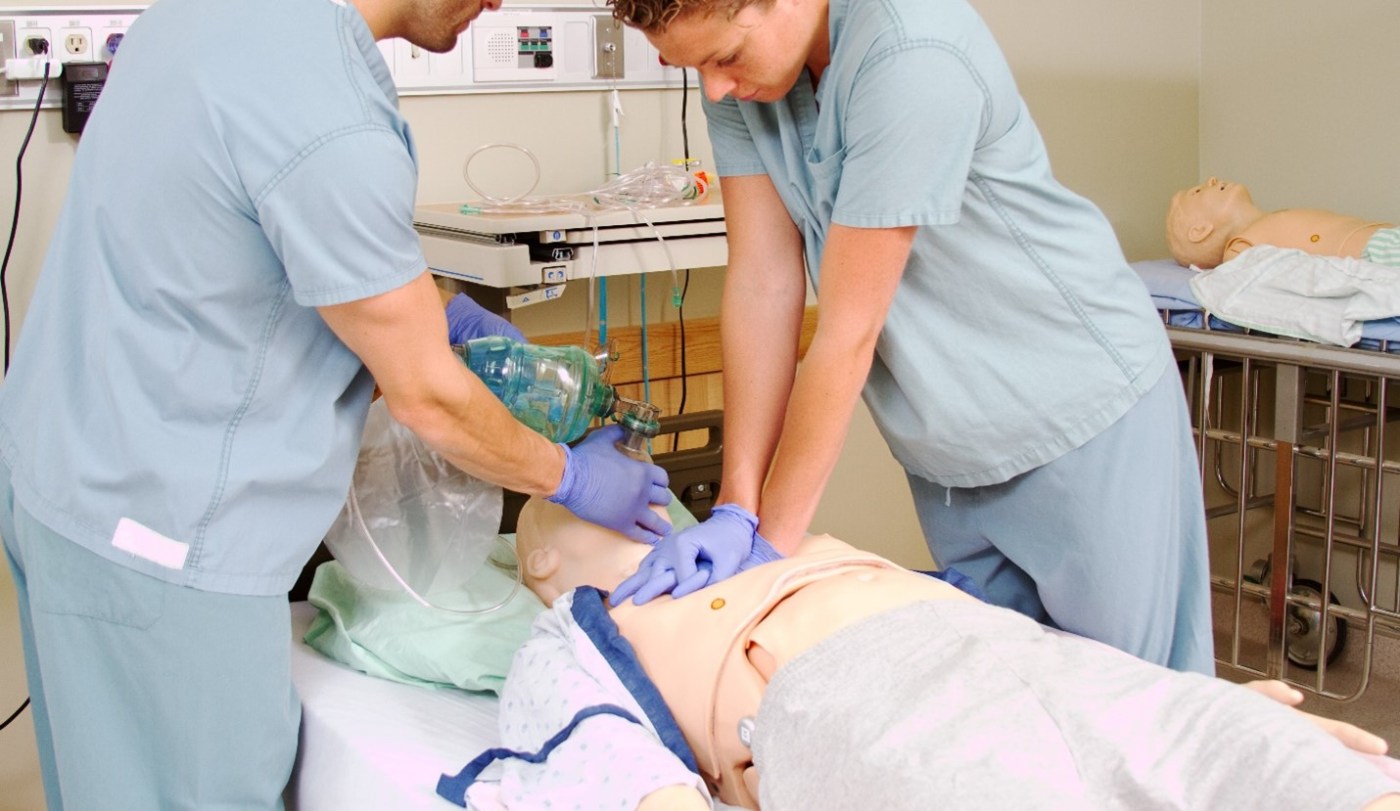The staff at the Springfield VA Clinic in Ohio were ready when the worst-case scenario happened. All thanks to a Mock Code simulation training akin to the Resuscitation Education and Innovation (REdI) program under VA’s Simulation Learning, Evaluation, Assessment, and Research Network (SimLEARN).
In July 2022, a Veteran arrived at the clinic, and, within two minutes, staff observed the patient sweating, showing signs of weakness, chest pain, arm numbness and shortness of breath. These are all signs that a patient might be ‘coding,’ a term for a person experiencing cardiac arrest. The staff knew what to do thanks to the Mock Code Program.
Mock Code Simulation Made Sure Staff Was Ready
When the Veteran became unresponsive, staff members immediately began cardiopulmonary resuscitation (CPR), called 911 and used an automated external defibrillator (AED). Within minutes, the patient regained pulse and consciousness but remained sweaty and gray. Emergency medical service (EMS) crews arrived approximately 15 minutes after the 911 call.
The Veteran lost their pulse again; EMS crews and clinic staff resumed chest compressions and used a manual resuscitation bag to provide ventilation and oxygen. The patient became responsive again and was transported to the nearest hospital for treatment. Six months before this real-life medical event happened, staff members prepared for situations like this in the simulation-based training.
“This Veteran was very lucky he walked into Springfield,” Dr. Scott D. Bleser, assistant chief of primary care service at Dayton VA Medical Center, said. “The well-trained team saved his life by performing basic life support procedures. They took immediate action and quickly initiated CPR, summoned EMS and used the AED. Quick assessment, quick action and superb teamwork resulted in this Veteran having a tomorrow.”
The event serves as an example of how a successful coding incident should be handled. The Springfield VA Clinic credits its Mock Code Program for helping to save their Veteran patient’s life this past summer. Thanks to the mock code simulation training, Dayton VAMC’s Mock Code Program saw success in three areas: time to call for help, time to start compressions and time to first shock.
In a situation like this, seconds matter and the training improved the time it took for staff to call for help by 41 seconds; the time it took for staff to start compressions improved by 39 seconds; and the time it took for staff to initiate a first shock improved by 28 seconds. Those seconds saved the Veteran’s life.
SimLEARN has developed a standardized approach to Mock Code simulations that allows for customization by each facility through its REdI program. This program raises the standard from merely evaluating whether guidelines have been met to having facilitators evaluate team dynamics and the care environment to identify hidden safety risks. The results of these mock code simulations lead to teams that are prepared to save lives, just like the Veteran’s life in Ohio.
Topics in this story
More Stories
Study underscores important role COVID vaccination can have in protecting Veterans from infection and reducing long-term health consequences
Columbia VA’s robotic surgery teams completed their 800th robotic surgery and are on schedule to hit 1,000 by the end of the year.
In a decentralized clinical trial, Veterans can participate from their own homes or local VA instead of having to travel to a research site.






